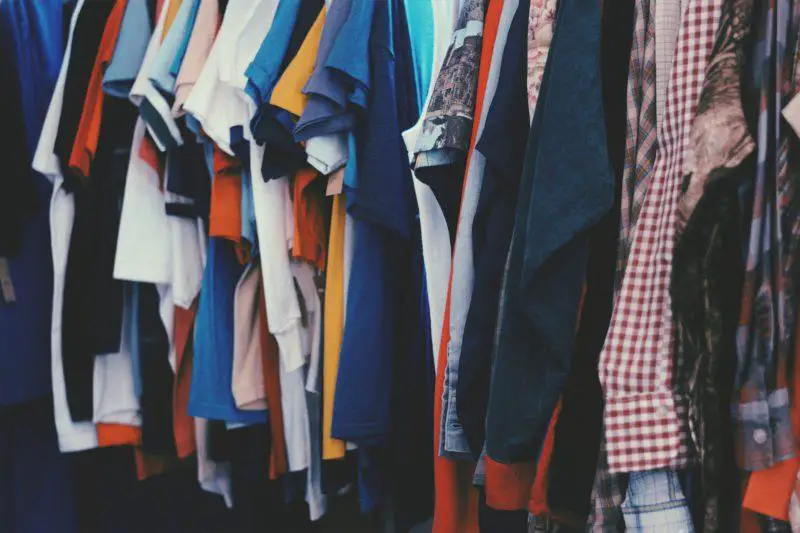When we think about maintaining a healthy lifestyle, we often focus on diet, exercise, and mental well-being. Rarely do we consider the clothes we wear as a contributing factor to our health. Yet, recent research suggests a surprising and concerning link between certain fabrics and our well-being. Let’s delve into the unseen dangers of synthetic clothing materials and their impact on our health, offering insights and alternatives for a safer wardrobe.
Unveiling the Microplastic Menace in Our Clothes
While microplastics are widely recognized as an environmental threat, their impact on human health is a more recent and disturbing discovery. These tiny particles, less than 5mm in size, are now found not just in our oceans and soil, but alarmingly, within our own bodies.
Recent studies have unveiled a startling truth: the clothes we wear, particularly those made from synthetic materials, can shed microplastics directly into our bloodstream. Research published in prominent journals like Environment International and Environmental Research has highlighted the extent of this issue. These studies have discovered microplastics in human blood samples and have linked dietary sources, including fruits, vegetables, and seafood, to microplastic contamination. [1,2]
The Surprising Source of Microplastics: Your Wardrobe
It’s easy to overlook our clothing as a source of environmental pollutants. However, studies have begun to shed light on how everyday fabrics like nylon and polyester contribute to the microplastic problem. These synthetic fibers, when washed or worn, release tiny plastic particles that can infiltrate our bodies, potentially leading to health issues.
- The University of Groningen Study: Researchers found that nylon microfibers caused significant decreases in the number and size of airways in human lung tissue models. This was attributed not just to the fibers themselves, but to the chemicals they released. [3]
- Historical Evidence From Textile Workers: Decades ago, workers handling synthetic fibers showed symptoms like coughing and breathlessness, indicating early signs of microplastic-related health issues. [4]
- The Long-Term Implications: Recent research suggests that the impact of these fibers is not just immediate but may also have long-lasting effects on our respiratory health. This growing body of evidence is changing the way we view the safety and health implications of our clothing choices. [5]

Understanding the Health Risks of Microplastics
Everyday activities, like washing synthetic clothes or consuming certain foods, can increase our exposure to microplastics, making it a pervasive and often overlooked health risk.
While microplastics are commonly discussed in the context of environmental pollution, their intrusion into our bodies presents a more personal and immediate concern. As these tiny particles make their way into our bloodstream and tissues, they bring a host of potential health risks.
- Tissue and Cellular Penetration: Microplastics, due to their tiny size, can easily infiltrate human tissues and cells. This penetration can lead to various health complications, often subtle and unnoticed at first.
- Chronic Inflammation: Constant exposure to microplastics is linked with chronic inflammation. This condition is a precursor to many serious health issues, including respiratory problems, cardiovascular diseases, and even increased cancer risks.
- Oxidative Stress: Microplastics contribute to oxidative stress, causing an imbalance in the body’s ability to detoxify harmful substances. This stress can lead to cell damage and heighten the risk of various diseases.
- Contamination of the Food Chain: Microplastics are not just a direct threat; they also enter our food chain, affecting plants, animals, and ultimately us. This contamination presents a complex, multi-level risk to human health.
Identifying and Avoiding Microplastic-Producing Fabrics
In our quest for a healthier lifestyle, examining the clothes in our wardrobe is just as crucial as choosing the right foods or following a fitness regime. Understanding which materials are likely to shed microplastics is a vital step in reducing our exposure to these harmful particles. Here’s a guide to the fabrics that are the biggest culprits in microplastic pollution:
- Polyester: Found in a wide range of clothing, polyester is notorious for releasing microfibers, especially during washing. Its prevalence in everyday wear makes it a primary source of microplastic pollution.
- Nylon: Common in sportswear and undergarments, nylon sheds microplastics over time, contributing significantly to environmental and personal health concerns.
- Acrylic: While soft and wool-like, acrylic sweaters release more microfibers than other synthetic fabrics, making them a considerable source of microplastics.
- Polypropylene: Used in activewear for its moisture-wicking properties, polypropylene is another synthetic polymer adding to the microplastic issue.
- Lycra/Spandex: Essential for stretchable garments, this fiber, despite its comfort, is a notable contributor to microplastic pollution.
- Microfiber Fabric: Often used in sportswear and cleaning cloths for its fine fibers, microfiber fabric is ironically a significant source of microplastics.

Transitioning to a Microplastic-Free Wardrobe: Healthier Clothing Choices
As we become more aware of the dangers posed by synthetic fabrics, it’s empowering to know that we have healthier alternatives. Choosing clothing made from natural fibers is not only better for the environment but also for our health. Here’s a list of natural materials to consider for a sustainable, microplastic-free wardrobe:
- Cotton: Widely used in everything from t-shirts to jeans, cotton is breathable and versatile. Opt for organic cotton to avoid the harm of pesticides and synthetic fertilizers.
- Linen: Derived from the flax plant, linen is strong and breathable, making it ideal for summer wear.
- Silk: Known for its luxury and softness, silk is a natural protein fiber that’s gentle on the skin and used in a variety of garments.
- Wool: From sheep, wool is an excellent insulator and is used in everything from sweaters to high-performance athletic wear.
- Hemp: Durable and eco-friendly, hemp requires minimal water and chemicals to grow, making it a sustainable choice.
- Bamboo: Soft and with natural antibacterial properties, bamboo fabric is suitable for activewear and undergarments.
- Tencel/Lyocell: Made from wood pulp, this biodegradable fabric is produced in an eco-friendly process and used in both casual and luxury clothing.
- Cashmere: Harvested from cashmere goats, this fabric is prized for its softness and warmth.
When opting for natural fabrics, it’s crucial to consider their source and production methods. Sustainable and ethical practices in the cultivation and harvesting of these materials can significantly reduce their environmental impact. Look for certifications and labels that indicate responsible sourcing and manufacturing.
My Personal RX: Reducing Exposure to Harmful Materials Around Us
I often stress the importance of vigilance not only in dietary choices but in all aspects of life, including everyday items like clothing. The reality is that toxic and chemical ingredients are pervasive, seeping into our lives through various means. These substances can have subtle yet profound impacts on our health, making it imperative to be mindful of what we wear, use, and surround ourselves with daily.
- Choose Natural Fibers: When selecting clothing, opt for natural fibers like cotton, wool, or linen. These materials are less likely to be treated with harmful chemicals compared to synthetic fibers.
- Be Aware of Household Products: Use eco-friendly and non-toxic cleaning products for your home. Many conventional cleaners contain harsh chemicals that can be harmful to your health.
- Detoxify Your Body: Incorporate the specially curated Detox Bundle, with Liver Support and Fiber Complete supplements into your regimen. These supplements aid in detoxifying your body from harmful substances and support overall health.
- Educate Yourself: Arm yourself with knowledge by utilizing the Toxic Ingredient Guide. This resource is invaluable in identifying and avoiding harmful ingredients in everyday products.
- Check Beauty and Personal Care Labels: Many personal care products, such as shampoos and lotions, contain chemicals that can be absorbed through the skin. Opt for natural and organic options.
- Avoid Plastic Containers: Reduce your use of plastics, especially for food storage. Chemicals from plastics can leach into food and drinks, particularly when heated.
- Ventilate Your Living Space: Ensure good air quality in your home and workplace. Regular ventilation can reduce the accumulation of airborne toxins from furniture, paint, or carpeting.
By consciously choosing products and adopting a lifestyle that minimizes exposure to harmful chemicals, we not only protect our immediate health but also contribute to long-term wellness and environmental sustainability.
Sources:
- Leslie, H., Van Velzen, M., Brandsma, S., Vethaak, D., García-Vallejo, J. J., & Lamoree, M. (2022). Discovery and quantification of plastic particle pollution in human blood. Environment International, 163, 107199. https://doi.org/10.1016/j.envint.2022.107199
- Conti, G. O., Ferrante, M., Bannı, M., Favara, C., Nicolosi, I., Cristaldi, A., & Zuccarello, P. (2020). Micro- and nano-plastics in edible fruit and vegetables. The first diet risks assessment for the general population. Environmental Research, 187, 109677. https://doi.org/10.1016/j.envres.2020.109677
- Plastic Soup Foundation. (2022). Do Clothes Make Us Sick? Fashion, Fibers and Human Health. https://www.plasticsoupfoundation.org/wp-content/uploads/2022/10/Do-clothes-make-us-sick-Fashion-fibers-and-human-health-PSF2022-.pdf
- Eschenbacher, W. L., Kreiss, K., Lougheed, M. D., Pransky, G., Day, B. J., & Castellan, R. M. (1999). Nylon Flock–Associated interstitial lung Disease. American Journal of Respiratory and Critical Care Medicine, 159(6), 2003–2008. https://doi.org/10.1164/ajrccm.159.6.9808002
- Microplastics? Ventilate, ventilate and vacuum. (2020, April 28). University of Groningen. https://www.rug.nl/news/2020/01/microplastics_-ventileren_-ventileren-en-stofzuigen?lang=en





















